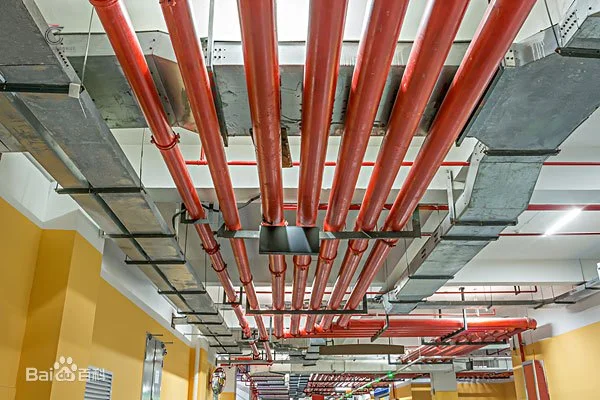Code requirements for fire fighting piping construction
In order to ensure the safety of buildings and people, many buildings will be installed fire pipes, but fire pipes can not be installed casually, need to be carried out according to the relevant installation specifications, so what are the requirements of fire pipe installation specifications? Now let's learn with me.
1. General requirements
(1) The fire hydrant water supply system pipe should not be welded when the inner and outer wall hot dip galvanized steel pipe is used. When the inner wall of the system pipeline is not anticorrosive, the connection can be welded, but the welding of the pipeline should meet the relevant requirements. The pipes of the sprinkler system (after the alarm valve) should not be welded but should be threaded, grooved, or flanged.
(2) Galvanized steel pipes with a pipe diameter >100mm for the fire hydrant water supply system shall be connected with flanges or trenches. If the pipe diameter of the automatic sprinkler system is larger than 100mm, the thread connection cannot be used. It is only required that the pipe segment with a pipe diameter ≥100mm should be equipped with a flange connection or groove connection point at a certain distance.
(3) Threaded flanges are recommended when the pipes of the hydrant water supply system and the automatic sprinkler system are connected by flanges, and secondary galvanizing is required when welding flanges are used.
(4) When the diameter of any pipe segment needs to be changed, reduced pipe joints and fittings in accordance with the standard shall be used.
(5) For the connection mode of fire fighting pipes and related technical requirements, please refer to the relevant provisions in "Technical Measures for Design of Civil Building Engineering - Water Supply and Drainage".

2, groove type (clamp) connection
(1) Groove-type connectors (pipe joints) and pipe groove depth shall comply with the provisions of "Groove type pipe joints" (CJJ/T156-2001). The working pressure of the grooved pipe joint with a nominal diameter DN≤250mm is 2.5mpa, and that of the grooved pipe joint with a nominal diameter DN≥300mm is 1.6mpa.
(2) Flexible joints should be used in places with vibration and buried pipes, and steel joints should be used in other places. When steel joints are used, a flexible joint should be set every 4 ~ 5 steel joints.
3. Thread connection
(1) Pipe diameter & LT in the system; DN100's inner and outer wall hot dip galvanized steel pipe or inner and outer wall hot dip galvanized seamless steel pipe can be connected with threads. When the system uses hot-dip galvanized steel pipe with inner and outer walls, the pipe fittings can be cast iron threaded fittings (GB3287~3289); When the system adopts hot-dip galvanized seamless steel pipe with inner and outer walls, the pipe fittings can be forged steel threaded fittings (GB/T14626).
(2) the wall thickness of steel pipe is less than δ< Sch30 (DN≥200mm) or wall thickness less than δ< Sch40 (DN< 200mm), shall not be connected with threaded connectors.
(3) When the pipe uses 55° taper pipe thread (Rc or R), the threaded interface can be sealed by PTFE tape; When the pipe uses 60° taper pipe thread (NPT), the sealant should be used as the seal of the thread interface; The sealing tape shall be applied on the male thread.
(4) Pipe diameter & GT; DN50 pipe shall not use threaded live joints, single reduction joints shall be used at pipe diameters.
4. Welding or flange joint
(1) Flange types can be divided into flat welded flanges, bimetallic welded flanges, butt welded flanges, and threaded flanges according to the connection form. Bimetallic welded steel pipe is a new type of pipe and flange selection must meet the standards of steel pipe flange (GB9112 ~ 9131), steel butt welded seamless pipe fittings (GB/T12459) and PTFE coated gasket for pipe flange (GB/T13404).
(2) If a hot-dip galvanized steel pipe is connected by a flange, a threaded flange should be selected. When the inner wall of the system pipeline is not anticorrosive, it can be welded and connected.
Cangzhou shenlong pipe manufacturing co., ltd. is a company specializing in the production of steel pipes and pipe fittings. We produce include seamless steel pipes, straight seam steel pipes, spiral steel pipes, etc., with uniform wall thickness, good perpendicularity, and high tensile strength. The products meet the standards of ASTM, API, EN, BS, JIS, etc., Products are used in a large number of fire engineering, by a large number of users praise.






